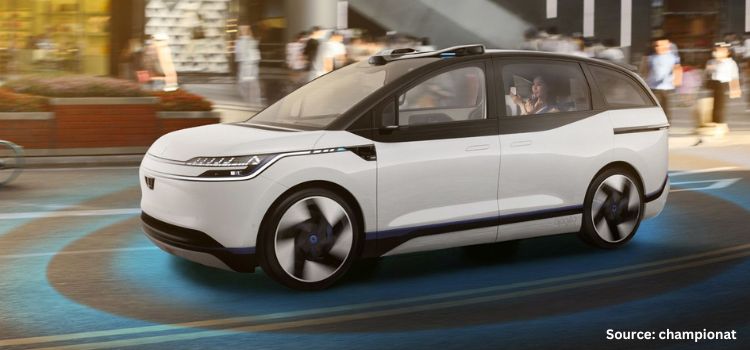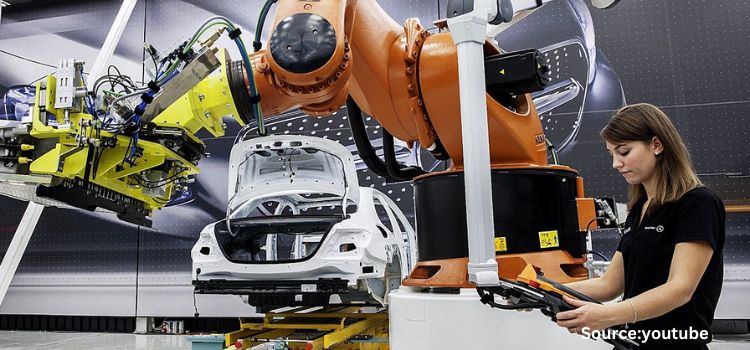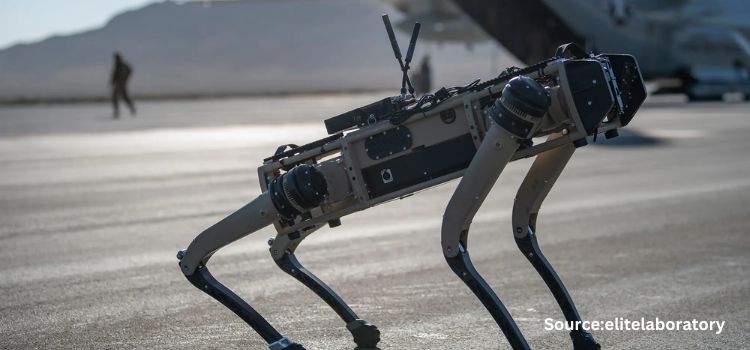Rise of Autonomous Vehicles: An Insight into the Industry
15-Feb-2025

What are Autonomous Vehicles?
Autonomous vehicles are known as self-driving cars that can operate without or with minimum human intervention. It uses artificial intelligence (AI) software, light detection & ranging (LiDAR), radio detection & ranging (RADAR), and cameras to sense the environment and navigate its way by forming an active 3D map. There are several levels of autonomy, ranging from vehicles with limited autonomous features such as adaptive cruise control and lane departure warning systems, to fully autonomous vehicles that do not require a human driver.
Autonomous vehicles have several advantages over conventional vehicles, including improved safety and low traffic congestion & emissions. Driverless cars are still in the early stages of development and deployment, along with several challenges in the industry including regulatory, technical, and societal challenges. However, many companies, including traditional automakers and technology firms are investing in driverless car technology, and it is widely believed that driverless cars will play a significant role in the future of transportation.
What are the types of Autonomous Vehicles?
There are two major types of driverless vehicles categorized by level of automation that include semi-autonomous and fully autonomous vehicles. The semi-autonomous segment dominates the autonomous vehicles with 97% market share, while fully autonomous segment captures only 3% of the market.
Semi-Autonomous vehicles feature a few automated systems for driver assistance. They are categorized into three levels such as L1, L2 and L3 vehicles. The demand for L1 vehicles has increased due to increased fuel efficiency and affordability. The rising demand for L2 vehicles can be attributed to a combination of comfortability, range, and safety factorsThe demand for L3 vehicles is increasing due to several features such as automatic traffic control and automated weather detection.
The rising preference of customers towards semi-autonomous cars that are equipped with adaptive cruise control, autonomous emergency braking (AEB), and blind spot detection has contributed significantly towards the growth of autonomous vehicle industry.
Fully Autonomous car is completely capable of self-driving in every situation anywhere without any driver intervention.
The rising preference of customers towards convenience features that allow passengers to relax, work, or sleep during their journey along with improved accessibility for people who are unable to drive, such as the elderly, disabled, or visually impaired people has increased the demand for these vehicles.
Major players in Autonomous Vehicles Industry:
There are numerous companies that are engaged in the development of autonomous vehicles. Leading players are fortifying their positions through a range of strategies, including the introduction of new products, partnerships, collaboration, and acquisitions to maintain their dominance in the market.
Next Move Strategy Consulting recognizes at least five large players in the market including Tesla, General Motors, Ford Motors, Mercedes, Hyundai Motor Group and others.
Size of Autonomous Vehicle Industry
According to a market report published by Next Move Strategy Consulting, autonomous vehicle industry is estimated to be around USD 87.56 Billion in 2021 and is expected to grow to USD 614.87 Billion by 2030, registering a CAGR of 24.7% between 2022 to 2030.
Which region is leading in the Autonomous Vehicle Industry?
According to Next Move Strategy Consulting, North America holds the major share in the autonomous vehicle industry with market share of 48.3% followed by Europe with a share of 28.6%. North America is home to a well-established automotive industry, that has helped to drive the growth of the autonomous vehicle industry. The presence of several local automotive manufacturers such as Tesla and General Motors that are engaged in research and development of driverless cars has been crucial to the growth of the autonomous vehicle market in North America.
Moreover, there is a strong government support for the development of autonomous vehicles, with the US government investing heavily in its research and development. This in turn drives the growth of the autonomous vehicle industry in North America.
Conclusion:
Autonomous vehicles are poised to play a significant role in the future of transportation, offering numerous benefits such as increased safety and efficiency. Despite the challenges such as safety concerns and regulatory hurdles that needs to be addressed, it is apparent that autonomous vehicles will play a key role in shaping the future of transportation. It is important that government, tech companies and automotive manufactures continue to work together to address these challenges and facilitate the successful integration of autonomous vehicles into the transportation systems.
About the Author:
 Kaushik Baul is a highly skilled and experienced researcher, with a passion for conducting thorough and accurate research. As a researcher, he is responsible for gathering, analyzing, and interpreting data, and helping his clients to deal with complex business challenges. With a bachelor’s degree in science, he has a strong foundation in data analysis and synthesizing relevant information to support a wide range of projects. He is an avid reader and has a love for traveling and playing cricket. The author can be reached at info@nextmsc.com
Kaushik Baul is a highly skilled and experienced researcher, with a passion for conducting thorough and accurate research. As a researcher, he is responsible for gathering, analyzing, and interpreting data, and helping his clients to deal with complex business challenges. With a bachelor’s degree in science, he has a strong foundation in data analysis and synthesizing relevant information to support a wide range of projects. He is an avid reader and has a love for traveling and playing cricket. The author can be reached at info@nextmsc.com
Add Comment
Related Blogs
Major Industry Leaders and Their Impact on the Automotive Robotics Market
Automotive robotics market expected to experience rapid grow...
Tech Titans Transforming AI Robots: IBM, Intel, and Microsoft's Influence
According to Next Move Strategy Consulting, the AI Robots Ma...
UGVS and the Power Players: Genetal Dynamics, Qinetiq, and Boston Dynamics
According to Next Move Strategy Consulting, the UGV Mar...











